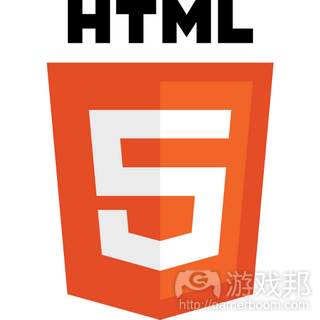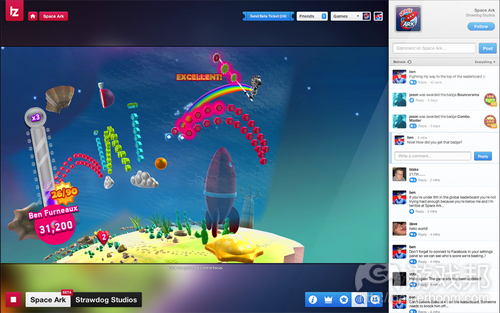论述HTML5平台的若干重要特性
作者:James Austin
开发者已凭借网页技术制作出创收丰厚的游戏作品许多年:《部落战争》凭借静态网页页面大获成功,《Farmville》凭借Flash开拓出新的疆域。但如今越来越多人觉得,未来HTML5将变成游戏的主要平台。为什么HTML5如此颇具趣味,它是否真的已做好准备?
目前HTML5是网络热词,所以我们就先从它的定义入手。在我看来,HTML5主要包含两个要素:1.新HTML标签,对播放视频和音效来说尤为重要;2.可供浏览器托管JavaScript应用利用的新编程界面。从根本来说,这是可供程序员利用的两个新功能。
第二点和游戏存在关联性。任何以JavaScript(游戏邦注:运行于网页浏览器的本地语言)编写的应用,若利用新HTML5编程界面,都可以被归类成HTML5游戏。但我会说得更深入些,因为我觉得游戏有其预期逼真程度。这不足以构成一个小型的游戏试验——我们应该瞄准匹配其他现代平台仿真度和复杂性的游戏。
HTML5逐步令JavaScript应用能够充分利用设备的各种硬件设施。就此来看,我觉得若HTML5游戏能够达到设备原生应用的质量和仿真度,那我们就可以认真考虑HTML5游戏。这一时代已经到来:看看StrawDog Studios在《Space Ark》的表现,或是Xona Games在《Score Rush》中取得的成就,两款游戏都是采用Turbulenz HTML5 JavaScript SDK。
为什么HTML5如此颇具趣味?
游戏开发者通常会基于有望吸引众多付费用户的平台开发游戏。但进行投资决策时,开发者会考虑用户规模,及用户发现、体验然后最终购买游戏的可能性。要回收投资成本,开发者就需要确保内容便于访问,将游戏投放至众多设备,面向广泛的用户群体。
可移植性
HTML5游戏的一个主要优点是能够移植至各种采用HTML5界面的设备。显然,制作适合各种设备的应用颇具挑战性。游戏需要应对各种尺寸和分辨率、及用户界面和性能截然不同的屏幕,但JavaScript和HTML5的可移植性令这一切得以实现。当然,HTML5不是首个做到这点的应用平台——想想Sun 1995年推出Java平台,这是个已有15年历史的替代选择。这确实不是什么新鲜内容。
覆盖面广
HTML5平台的另一潜在优点是,覆盖面广。开发者喜欢iOS平台是因为他们的游戏不仅能够因此面向广阔的市场,最重要的是,能够快速面向广阔的市场。HTML5能够兼容采用各种操作系统的个人电脑:所有采用Android和iOS系统的手机设备,及其他任何连网智能设备,例如未来将越来越受欢迎的Smart TV。玩家只需点击网页链接。相反,谈到HTML5内容,游戏掌机是访问性最低的设备。但话说回来,掌机制作商为什么要引入他们生态系统之外的内容呢?
开放性
掌机设备制作商对平台的控制性带来HTML5的另一优点,即开放性。HTML5不为单个公司所有或控制。HTML5的首个草稿版本出现于2004年,可以说,HTML5开发和发展的分裂性减缓了平台的前进步伐。但这一开放性特点令HTML5拥有比其他类似平台更持久的生命力。平台不存在单一的既得利益(游戏邦注:就如Adobe与Flash的关系);相反,HTML5和互联网平台的开发者存在共享利益。
即时可访问性
HTML5游戏的美好之处在于它的即时可访问性和即时发布特点。在此依然难倒众多非技术用户的安装和更新操作都由应用开发者完成。HTML5游戏向用户呈现内容的方式非常高效。每当出现更新内容时,浏览器就会无缝隙地下载应用。HTML5游戏的启动过程,相比运用于手机设备和应用存储的的光滑应用模式,是一个显著的进步。
所以HTML5似乎并不特别或新颖。但纵观所有细微变化和优点——可移植性、覆盖面、开放性及即时访问性,可以说这是个非常有潜力的平台。最重要的是,很多开发者和公司都开始投资这一平台,谋求自己的未来利益。(本文为游戏邦/gamerboom.com编译,拒绝任何不保留版权的转载,如需转载请联系:游戏邦)
The HTML5 Age Is Upon Us
By James Austin
In this guest editorial, Turbulenz CEO James Austin details what HTML5 means for games and what is possible with HTML5 today
Developers have been creating financially successful games with web technologies for many years: Travian was successful using static web pages and Farmville ploughed an entirely new furrow using Flash. But there is now a growing acceptance that HTML5 will be a major platform for games in the future. So why is HTML5 interesting, and is it really ready?
HTML5 is currently the ultimate Internet buzz word, so let’s start by defining what it actually is. For me, HTML5 is basically two things: One, new HTML tags, most significantly for playing movies and audio; two, new programming interfaces that browser-hosted JavaScript applications can leverage. Basically, new features for programmers to use.
The second point is the relevant one for games. Any application that is written in JavaScript – the native language that runs within a web browser – that leverages the new HTML5 programming interfaces can be classed as an HTML5 game. But I would go further, because I think there is an expected level of fidelity for games. It’s not enough to be a little gaming experiment, a spinning duck with some modern shading – we should be targeting games that match the fidelity and complexity possible on other modern platforms.
HTML5 is gradually allowing JavaScript applications to fully utilise all hardware available within a device. With that in mind, I think we can only seriously consider HTML5 games when they match the quality and fidelity possible via a native application on the same device. This time has come: just look at what StrawDog Studios achieved with Space Ark, or Xona Games achieved with Score Rush, both of whom used the Turbulenz HTML5 JavaScript SDK.
Why Is HTML5 Interesting?
Game developers will typically create content for platforms that have, or have the potential to attract, a large paying audience. When making an investment decision, developers take into account the size of the audience and the potential for that audience discovering, playing and ultimately paying for the game. To recoup their investment, developers need to get a game onto many devices to many consumers in an instantly accessible and simple way.
Portability
A major perceived strength of an HTML5 game is its potential portability across devices that implement the HTML5 interfaces. Clearly, there are significant design challenges to making an application useable on a wide range of devices. The game would need to cleanly handle screens of different sizes and resolutions, with different user interfaces and wildly different performance, but the portability of JavaScript and HTML5 makes this possible. Of course, HTML5 isn’t the first application platform that enables this – just think of Sun’s 1995 release of Java to consider a 17 year old alternative. Nothing new indeed.
Reach
Another potential strength of the HTML5 platform is its sheer reach. Developers love the iOS platform because their game is not only accessible to a huge market, but most importantly it is rapidly accessible to a huge market. HTML5′s reach has the potential to include all personal computers no matter the operating system: all mobile devices including Android and iOS, and any other smart Internet connected device such as the mythical Smart TV that may one day start gaining traction. All with just one click on a weblink. Perversely, it is the games consoles that are the least accessible devices when it comes to HTML5 content. But then again, why would the console manufacturers want to enable content that falls outside of their ecosystems?
Neutrality
The console manufacturers’ control of their platforms leads us onto another strength of HTML5, namely its neutrality. HTML5 isn’t owned or controlled by any single company. The first draft of HTML5 was created in 2004, and arguably the distributed nature of HTML5′s development and growth have seriously slowed its progress. But this neutrality is exactly what will give HTML5 a life expectancy well beyond other conceptually similar owned platforms. The platform doesn’t have a single vested interest, such as Adobe has with Flash; rather, it has a shared interest for companies building upon the internet as their platform.
Instant accessibility
The beauty of an HTML5 game is its instant accessibility and deployment. Installation and updates, which still challenge many non-technical users, are all handled by the application developers. The way an HTML5 game is delivered to users is highly efficient. The application is downloaded seamlessly by the browser whenever updates are made, and potentially huge content payloads are distributed on demand by the application. The starting process of an HTML5 game is a generational improvement over the already slick application model used on mobile devices and application stores today.
So it seems HTML5 is nothing special and nothing new. But when you take all of the little differences and strengths together – portability, reach, neutrality and instant accessibilityc – we have something with huge potential. And most importantly of all, there is a groundswell of developers and businesses investing in the platform for their future benefit.(Source:gamesindustry)
上一篇:分析游戏主题的作用及其设置原则










































 闽公网安备35020302001549号
闽公网安备35020302001549号